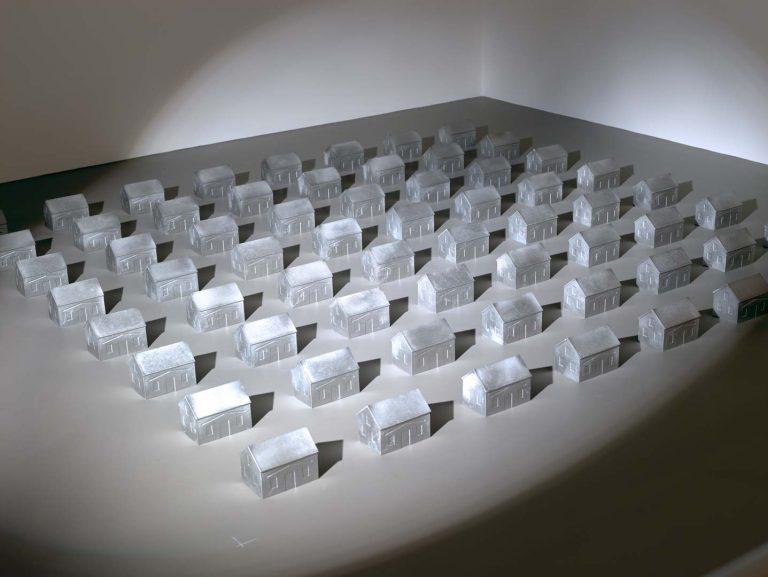We acknowledge the Traditional Owners of the land on which the Queensland Art Gallery | Gallery of Modern Art stands and recognise the creative contribution First Australians make to the art and culture of this country.

Aleks Danko / Australia b.1950 / DAY IN DAY OUT (second version) 1991 / Cast aluminium and theatre light on metal support / 11 x 260 x 229cm / Purchased 1992 / Collection: Queensland Art Gallery / © QAG
Aleks DankoDAY IN DAY OUT (second version) 1991
Not Currently on Display
In DAY IN DAY OUT, on a purely sculptural level, Aleks Danko has replaced the traditional figure with forms that could be described as espousing a minimalist aesthetic — it reduces the concept of the subject to its most essential elements. Here, the monumental scale of the suburban block is miniaturised, as if it were an architectural model or sketch.
The traditional positioning of a sculpture — on a pedestal, in a ‘proper’ setting and with appropriate ‘professional’ presentation — is also disrupted by the work’s location on the floor. Brightly lit by an undisguised theatre light, the work alludes to two metaphors: ‘life is art’ and ‘art is performance’.
On another level, Aleks Danko’s work seduces the viewer into reflecting on the repetitious nature of suburban life: commute, work, sleep. . . DAY IN DAY OUT is a poetic work through which the artist addresses important questions of artistic creation and humanity, all without the inclusion of the human figure.
Born in Adelaide in 1950 to Ukrainian emigrants, Aleks Danko graduated from the South Australian School of Art in 1971. In the 1970s, he was associated, through performance, film and conceptual works, and with artists such as Imants Tillers, Vivienne Binns and Joan Grounds. While they developed their own modes of questioning in two-dimensional art, Danko remained mainly a sculptor and is a master of sign and symbol. His works confront us with a series of objects that are puns (visual or otherwise) and that make serious thrusts at, and incursions into, established artistic concepts.
Danko’s practice has consistently explored aspects of Australian cultural beliefs and events as well as notions of aesthetic value and the institutionalisation of art. Humour, often black, is extensively employed in his work through irony, parody and satire. The artist has previously employed iconic symbols of Australian culture, such as garden sheds, cake tins, Vegemite and Australian Rules football, in order to explore the narratives that surround the construction of the ‘Australian’ identity; he asks what these associations may reveal about a national identity and, indeed, if one exists at all.